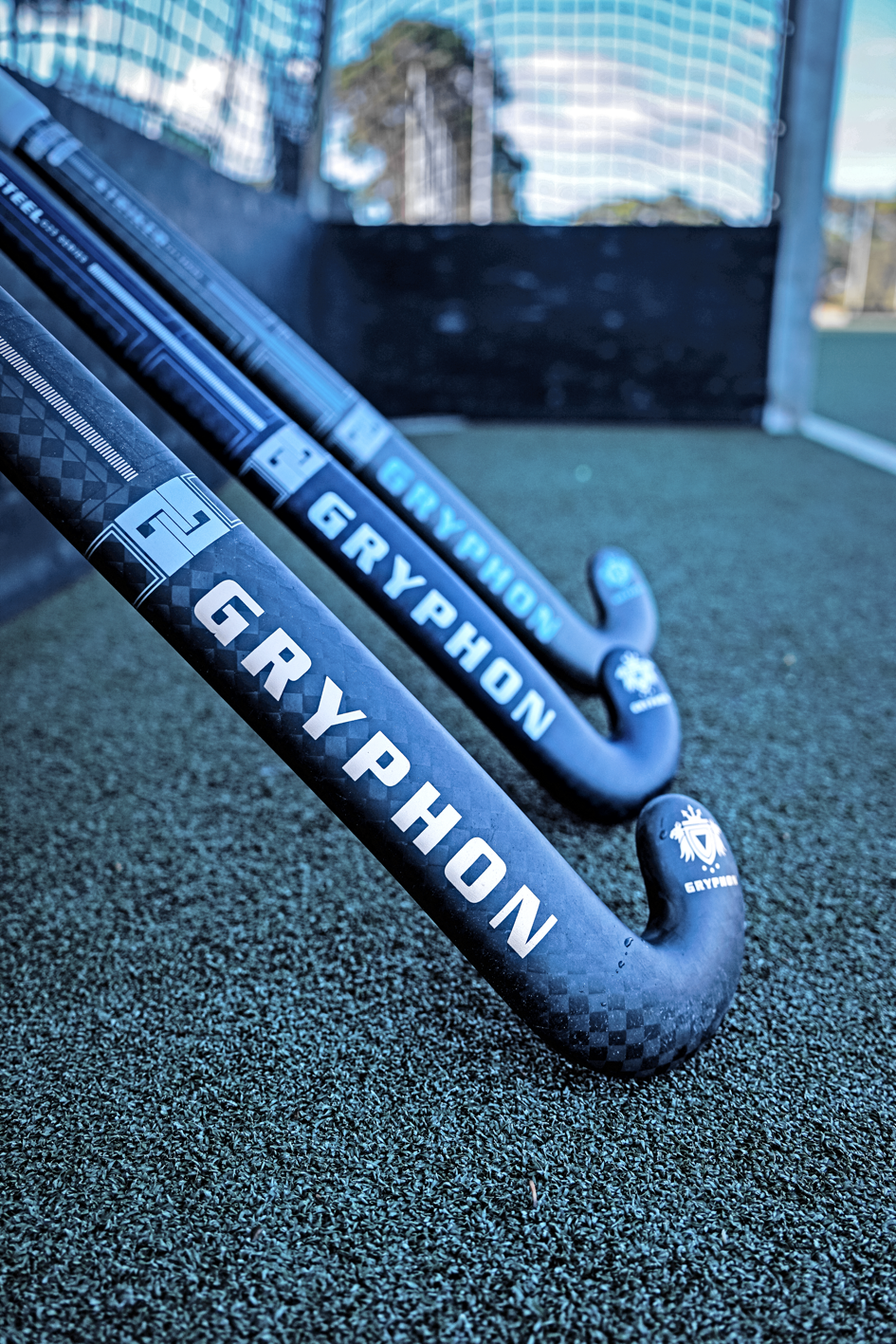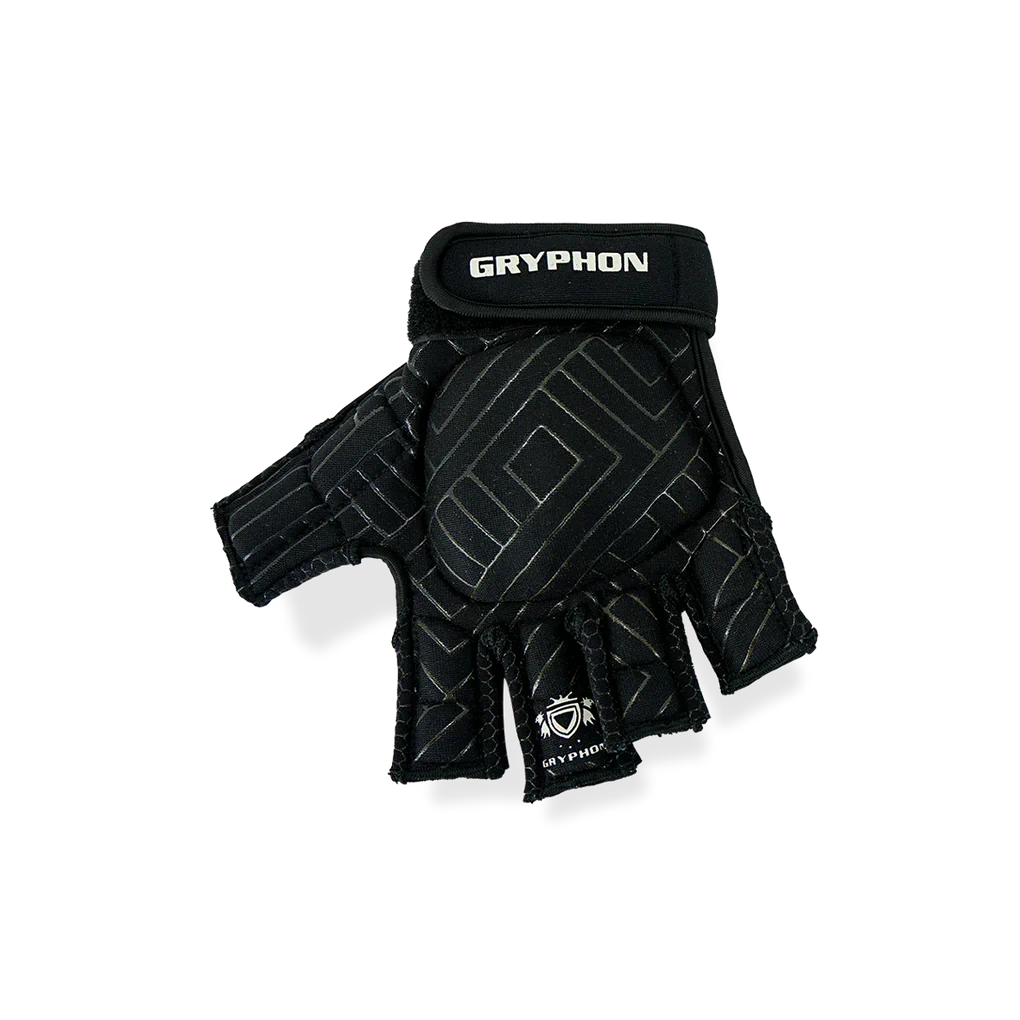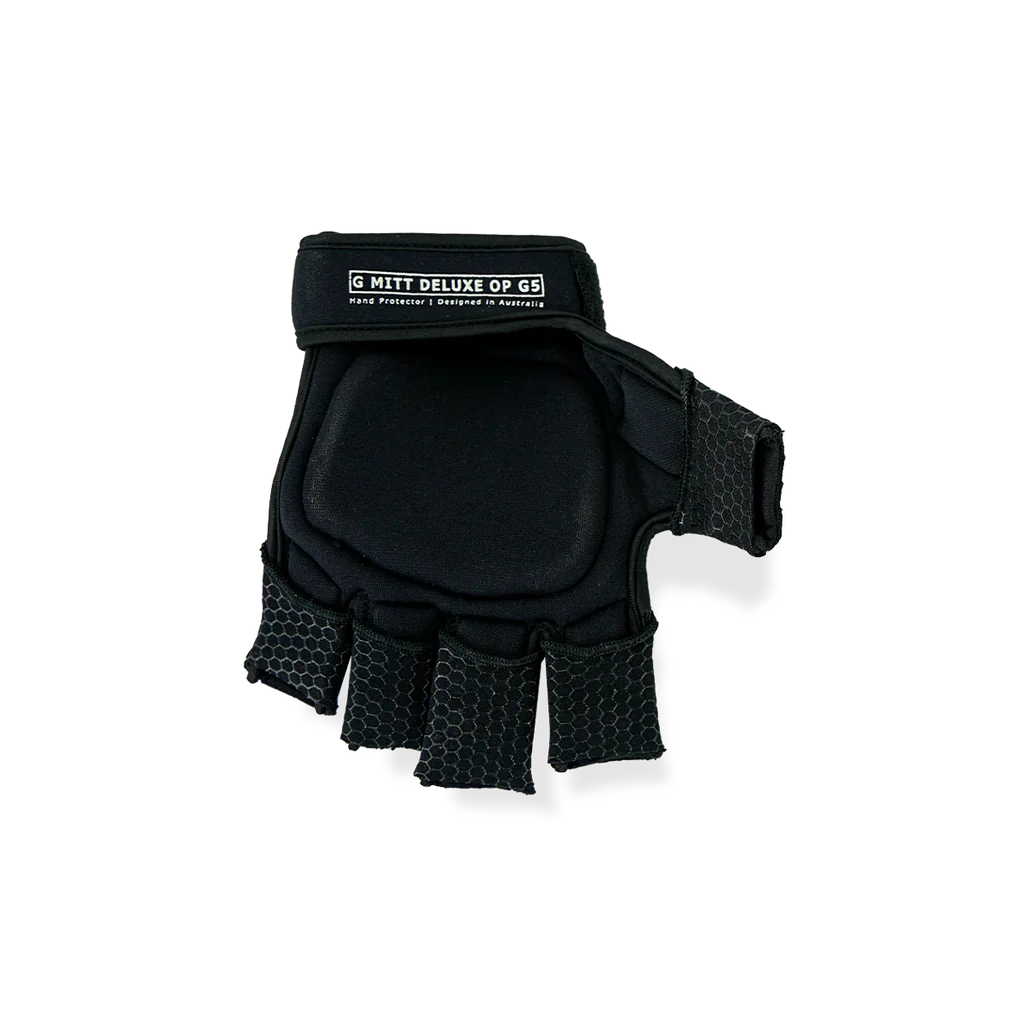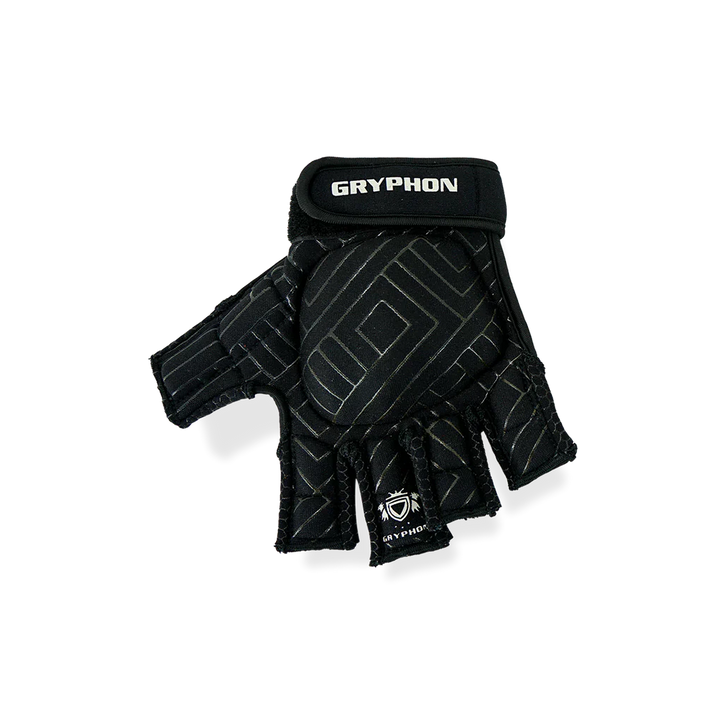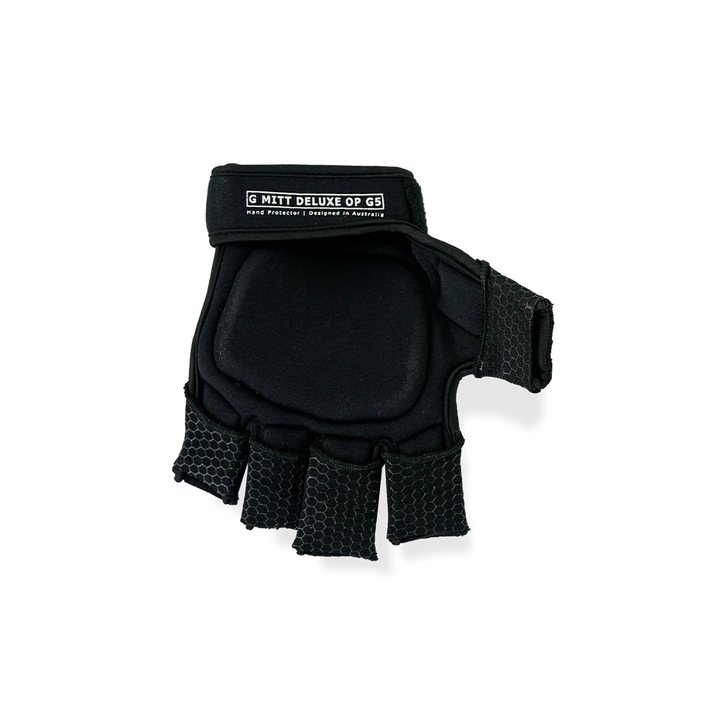GRYPHON G Mitt Deluxe G5

Hockey Player Protection Buyer's Guide
Introduction
There are four main areas of hockey player protection; shin, hand, mouth and PCD (Penalty Corner Defence).
Shin Protection
All hockey shinguards work on the same basic premise of having a load-spreading pre-shaped plate (usually some form of thermoplastic polymer) which is lined with foam for the wearer's comfort.
The plate is the key protective element and is designed to spread the load of any impact across its surface to dissipate the force. Naturally there will always be load to absorb as the plate is pushed towards the shin on impact, which is where the foam lining comes in, to cushion that force (as well as make them more comfortable to wear).
Where pads will differ is lightness, breathability, materials behind and around the plate and of course the protective qualities of the plate itself.
The most noticeable difference will be the materials around the plate. At the lower end this will usually be a simple foam lining which is almost always lined with some kind of fabric to avoid any heat reaction with the foam. You may see extra foam on the front (a bit more protection but also adds weight) and straps to help keep the pad in place (often these are removable). Vents may also be present to help keep your legs cool.
The material used in the plate is usually heat reactive, so the more you wear them the more they will mould to you. Shinguards are always pre-moulded to varying degrees to give a close fit, so you may need to wear them in for a bit. Mostly they will be asymmetrical, with a higher side that is meant to be worn on the outside of the leg.
It is very difficult to offer size guides for shinguards. You cannot really use a player's height since two people of the same height may have different leg lengths! Some brands offer dimensions for the front of the guard but remember these should only ever be regarded as a general guide due to the curved nature of the product. As with everything if you are able to come and see us to try some on that's your best bet.
Hand Protection
Hand protection has evolved greatly over recent years. Originally made of varying types of compressed foam hand protection has evolved to most commonly be almost a hand version of the shinguard.
'Hard Shell' gloves are therefore the most popular now due to their increased protection allied to decreased bulk. Similar to shinguards a pre-shaped protective plate covers the impact areas (back of the hand, fingers and thumb) to create load-spreading protection that is foam lined for comfort and impact absorption.
There are two basic distinctions between gloves of this type; whether they come with or without a palm and how much of the fingers are covered.
The benefits of 'palm free' gloves is an increased sense of not wearing one along with the fact you can feel the stick directly in your hand. Gloves with a palm are favoured by those who want the feeling of having their whole hand inside a glove or like the grip that palms (usually featuring silicon grip patterns) can provide.
Finger protection is either to the first knuckle only or extended to the second knuckle. Personal preference dictates your choice, usually a trade off between coverage and the desire to minimise the feeling of wearing a glove. Your finger tips will always be uncovered.
Compressed foam gloves are still available, typically as a full glove that covers the entire hand. As they are bulkier they are less popular. Larger scale versions of this concept are marketed as indoor or PCD gloves.
Finally, for those of you new to the game, you would normally wear a glove on your left hand since this is the one facing outwards from the stick. Right hand gloves are available in both shell and foam forms but not widely used by comparison, usually only when the wearer wants complete protection or is shielding a previous injury.
Mouth Protection
Usually called gumshields or mouthguards, these are really something that every hockey player should wear at all times!
The ultimate protection is something made by your dentist but the cost of these is normally something that puts players off. There are "off the shelf" mouthguards available now that have very comparable levels of protection.
All off the shelf products are heated to mould. Usually you pop them in some boiling water to soften the compound before putting them in your mouth to mould to your top set of teeth. Many these days are re-mouldable, so if you get it wrong you can restart the process.
Again though, wearing a mouthguard is highly recommended!
Penalty Corner Defence
A growing number of products are coming to market in this category. Remember though, the market does have outlets peddling cheap products but as ever you get what you pay for - the best protection that you can guarantee has been subjected to appropriate testing always comes from the best know manufacturers.
Initially this category only featured face masks but increasing options in knee and hand protection are coming to the market as well.
Face Masks come in two forms; ones made of some kind of thermoplastic polymer (usually ABS) or those with a metal grill. Both are always lined with some kind of foam to keep the protective (hard) part from touching the face.
While plastic masks (from known manufacturers) will offer good protection for club players, you cannot beat metal grill masks for protection and also visibility. They cost a bit more but keeping in mind the job they do it is worth it!
Knee Pads are usually simple foam backed hard shell (same materials as other products) guards with a strap to keep them in place and make quick and easy to put on and take off without removing your shinguards.
Hand Protectors usually look like Ice Hockey player gloves, oversized and heavily padded, these are designed to fit over the top of your outfield glove and give huge coverage on your hands and wrists.
Finally, that common question - why do my shinguards and gloves stink so badly?
A simple question to answer - because when you take them off you chuck them in your bag and don't touch them again until you are next playing or training! In the time between these sweat-soaked products are festering in a bag rather than being allowed to breath and dry. Take them out of your bag when you get home and allow them to dry and air away from any heat source and not only will they stay fresher for longer you will also avoid the build up of bacteria that can cause infection and irritation.
For some extra protection from sweat build up in your shinguards why not grab some inner socks or shinliners? These simple elastane sleeves are great for absorbing the sweat from your legs rather than letting it line your shinguards and just chuck them in the wash with the rest of your gear between uses.
If you still need more help feel free to give us a call on 01462 423839, email us on sales@thehockeyandcricketshop.com or even better come and see us!
- In stock, ready to ship
- Backordered, shipping soon
Developed by GRYPHON 15 years ago, the G MITT remains the benchmark for players' protective gloves. Offering ultimate protection and ergonomics, it impressively maintains a lightweight design while ensuring full hand mobility and dexterity. Count on the G MITT to provide trusted performance and unwavering protection for your game
Features
-
Open Palm
-
Moulded PU Protective Shell with EVA
-
Finger Protection to the 2nd knuckle.
-
Adjustable Wriststrap


